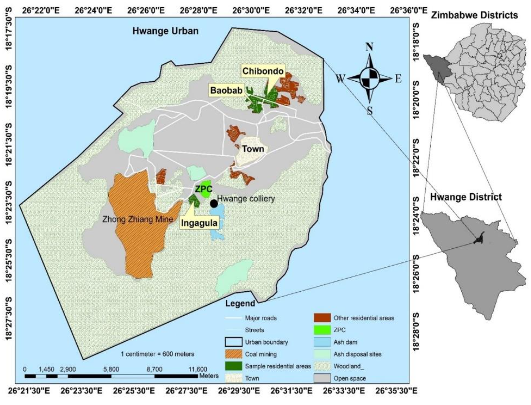Considering state administrative decrees (SAD) by artificial intelligence from the transparency principle in Indonesia (Case study: The ministry of law and human rights of the republic Indonesia)
Abstract
Artificial Intelligence (AI) has now touched the realm of government, such as in the creation of State Administrative Decrees (SAD/Keputusan Tata Usaha Negara/KTUN). The involvement of AI in this realm leaves questions regarding the application of its transparency aspects based on the Indonesian legal context. This article aims to understand the phenomenon of using AI for SADs in Indonesia and to find out the application of the principle of transparency generally and contextually in terms of using AI for SADs. This research is normative-empirical research with a conceptual and statutory approach by conducting literature studies and respondent interviews. As a result, SADs as a product of government administrative action in several cases have been using AI and have received normative recognition. On the other hand, there is legislation that regulates the general aspects of SAD transparency, especially related to public information openness and personal data protection. AI transparency itself can be divided into two concepts, namely: technical transparency and justifiable transparency. Justifiable transparency is considered more convenient and suitable to be applied in Indonesia.
References
[1]Asia TTG. Singapore to Introduce Fingerprints and Facial Immigration Clearance by 2025. Available online: https://www.ttgasia.com/2019/11/14/singapore-to-introduce-fingerprints-and-face-immigration-clearance-by-2025/ (accessed on 17 September 2023).
[2]Hasnawati T. Implementation of Electronic Self Assessment Tax Reporting Application (E-SATRIA) in tax reporting at the Bandung City Regional Revenue Management Agency (Indonesian). UIN Sunan Gunung Djati Bandung; 2020.
[3]Damayanti A. Licensing at the Ministry of Trade will be served by ‘robots’, how (Indonesian)? Available online: https://finance.detik.com/berita-ekonomi-bisnis/d-5784526/urus-perizinan-di-kemendag-bakal-dilayani-robot-caranya (accessed on 17 September 2023).
[4]Available online: https://www.dgip.go.id/artikel/detail-artikel/direktur-ti-aplikasi-iproline-harus-mudah-cepat-tepat-dan-terukur?kategori= (accessed on 17 September 2023).
[5]Putra HP, Duadji N, Sulistio EB. Application of Industry 4.0 Technology in Public Services in the Field of Population Administration (Study of e-KTP Services at the Population and Civil Registration Office of Way Kanan Regency) (Indonesian). Administrativa: Jurnal Birokrasi, Kebijakan dan Pelayanan Publik. 2020; 2(1): 1–14. doi: 10.23960/administrativa.v10i1.14
[6]Presidential Regulation Number 95 of 2018 concerning Electronic-Based Government Systems. President of Republic of Indonesia; 2018
[7]Tjandra R. State Administrative Law (Indonesian). Jakarta: Sinar Grafika; 2018.
[8]Law Number 30 of 2014 on the Government Administration. Indonesian Government; 2014.
[9]Law Number 6 of 2023 concerning The Enactment of Government Regulations in Lieu of Law Number 2 of 2022 concerning Job Creation into Law. Indonesian Government; 2023.
[10]Mawardi I. PTUN’s New Paradigm: Administrative Justice’s Response to Democratization (Indonesian). Yogyakarta: Thafa Media; 2016.
[11]Ridwan HR. State Administrative Law (Indonesia). Jakarta: Rajawali Press; 2011.
[12]Anoeska B. The Principle of Transparency in EU Law. Leiden: Uitgeverij BOXPress’s-Hertogenbosch; 2013.
[13]Meijer A. Understanding modern transparency. International Review of Administrative Sciences. 2009; 75(2): 255–269. doi: 10.1177/0020852309104175
[14]Rahman F. Legal Framework for Personal Data Protection in the Implementation of Electronic-Based Government Systems in Indonesia (Indonesian). Jurnal Legislasi Indonesia. 2021; 18(1): 81. doi: 10.54629/jli.v18i1.736
[15]Hood C. A Public Management For All Seasons? Public Administration. 1991; 69(1): 3–19. doi: 10.1111/j.1467-9299.1991.tb00779.x
[16]Connolly R. The Trouble with Transparency: A Critical Review of Openness in e-Government. 2011. 3(1). doi:10.2202/1944-2866.1076.
[17]Roberts A. Blacked Out: Government Secrecy in the Information Age. Cambridge: Cambridge University Press; 2006.
[18]Florini A. The Right to Know. Columbia University Press; 2007. doi: 10.7312/flor14158
[19]State Administrative Court Decision Number 89/G/2021/PTUN-JKT. State Administrative Court; 2021
[20]van Sophie B. Transparency in the European Union: A Crucial Link in Shaping the New Social Contract Between the Citizen and the EU. The Netherlands: Faculty of Law, Tilburg University, n.d.
[21]Ward J. Black Box Artificial Intelligence and The Rule of Law. Law and Comtemporary Problem. 2021; 84.
[22]Kuziemski M, Misuraca G. AI governance in the public sector: Three tales from the frontiers of automated decision-making in democratic settings. Telecommunications Policy. 2020; 44(6): 101976. doi: 10.1016/j.telpol.2020.101976
[23]Sabani A. Investigating the influence of transparency on the adoption of e-Government in Indonesia. Journal of Science and Technology Policy Management. 2020; 12(2): 236–255. doi: 10.1108/jstpm-03-2020-0046
[24]Soekanto S, Sri M. Normative Legal Research: A Brief Overview. Raja Grafindo, Jakarta; 1985.
[25]Salim HS, Nurbani ES. Application of Legal Theory to Thesis and Dissertation Research (Indonesian). Rajawali Pers, Jakarta; 2014.
[26]Diantha, Pasek IM. Normative Legal Research Methodology in Justifying Legal Theory (Indonesian). Prenada Media Group, Jakarta; 2019.
[27]Ridwan. Three Dimensions of Administrative Law and Administrative Justice (Indonesian). Yogyakarta: FH UII Press; 2009.
[28]Law Number 14 of 2008 on the Openness of Public Information. Indonesian Government; 2008.
[29]Farrell E, Giubilei M, Griciene A, et al. Artificial Intelligence for the Public Sector. Publications Office of the European Union, Luxembourg; 2023.
[30]The European Commission’s High-Level Expert Group on Artificial Intelligence. A Definition of AI: Main Capabilities and Scientific Disciplines. European Commission; 2018.
[31]OECD. Hello, World: Artificial Intelligence and Its Use in The Public Sector. OECD. 2019: 12. doi: 10.1787/726fd39d-en
[32]Berryhill J, Heang KK, Clogher R, McBride K. Artificial Intelligence and Its Use in The Public Sector. OECD Working Papers on Public Governance; 2019. p. 32.
[33]João R, Santo PE, Melão N. Impacts of Artificial Intelligence on Public Administration: A Systematic Literature Review. In: Proceeding of the 14th Iberian conference on information systems and technologies (CISTI); 2019; Coimbra, Portugal. pp. 1–7.
[34]Wolswinkel J. Comparative Study on Administrative Law and The Use of Artificial Intelligence and Other Algorithmic Systems in Administrative Decision-Making in The Member States of The Council of Europe. Council of Europe; 2022.
[35]Manzoni M, Tangi. AI Watch. Artificial Intelligence for The Public Sector. Report of the “4th Peer Learning Workshop on the use and impact of AI in public services. Available online: https://doi.org/10.2760/142724 (accessed on 2 May 2023).
[36]Bloombergtax. Available online: https://news.bloombergtax.com/daily-tax-report-international/italy-turns-to-ai-to-find-taxes-in-cash-first-evasive-culture (accessed on 2 May 2023).
[37]Tangi L, Van Noordt C, Combetto M, et al. European Landscape on the Use of Artificial Intelligence by the Public Sector. Publications Office of the European Union; 2022.
[38]Priowirjanto ES. The Urgency of Regulating Artificial Intelligence in the Online Business Sector during the COVID-19 Pandemic in Indonesia (Indonesian). Jurnal Bina Mulia Hukum. 2022; 6(2): 254–272. doi: 10.23920/jbmh.v6i2.355
[39]Law Number 19 of 2016 on Amendments to Law Number 11 of 2008 on the Information and Electronic Transactions. Indonesian Government; 2016.
[40]Samoili S, López Cobo M, Delipetrev B. AI Watch. Defining Artificial Intelligence 2.0. Towards An Operational Definition and Taxonomy for The AI Landscape. Luxembourg: Publications Office of the EU; 2021.
[41]Supriyadi EI, Asih DB. Implementation of Artificial Intelligence (AI) in the Field of Public Administration in the Era of the Industrial Revolution 4.0 (Indonesian). Jurnal RASI. 2021; 2(2): 12–22. doi: 10.52496/rasi.v2i2.62
[42]Law Number 27 of 2022 on the Personal Data Protection. Indonesian Government; 2022.
[43]Law Number 25 of 2009 on the Public Services. Indonesian Government; 2009
[44]Noor MU. Initiating the Information Society in Indonesia through the Implementation of Public Information Disclosure: A Decade of Public Information Disclosure Law (Indonesian). Khizanah al-Hikmah: Jurnal Ilmu Perpustakaan, Informasi, dan Kearsipan. 2019; 7(1): 11. doi: 10.24252/kah.v7i1a2
[45]Mock WBT. An Interdisciplinary Introduction to Legal Transparency: A Tool for Rational Development. Penn State International Law Review. 2000; 8(2).
[46]Casey B, Farhangi A, Vogl R. Rethinking Explainable Machines: The GDPR’s Right to Explanation Debate and The Rise of Algorithmic Audits in Enterprise. 34 Berkeley Technology Law Journal. 2019; 143
[47]Burt A. The AI Transparency Paradox. Available online: https://hbr.org/2019/12/the-ai-transparency-paradox (accessed on 26 October 2023).
[48]Paez A. Negligent Algorithmic Discrimination. Law and Contemporary Problems. 2021; 84 (3): 19–33.
[49]Pasquale F. The Black Box Society: The Secret Algorithms that Control Money and Information. London: Harvard University Press; 2015.
[50]Law Number 30 of 2000 on the Trade Secrets. Indonesian Government; 2000.
[51]Government Regulation Number 61 of 2010 on the Implementation of Law Number 14 of 2008 concerning the Openness of Public Information. Indonesian Government; 2010.
[52]Reza S, Strobel M, Zick Y. On the Privacy Risk of Model Explanations. Available online: https://arxiv.org/abs/1907.00164 (accessed on 2 May 2023).
[53]Asshiddiqie J. Indonesia’s Constitution and Constitutionalism (Indonesian). Jakarta: Sinar Grafika; 2018.
[54]Amaritasari I. National Security in International Concepts and Standards (Indonesian). Jurnal Keamanan Nasional. 2015; 1(2). doi: 10.31599/jkn.v1i2.21
[55]Keil FC. Explanation and Understanding. Annual Review of Psychology. 2006; 57(1): 227–254. doi: 10.1146/annurev.psych.57.102904.190100
[56]Hadfield, Gillian K. Explanation and Justification: AI Decision-Making, Law, and The Rights of Citizens. Schwartz Reisman Institute for Technology and Society, University of Toronto; 2021.
[57]Chauhan, Prashant, and Gagandeep Kaur. “Gender Bias and Artificial Intelligence: A Challenge within the Periphery of Human Rights.” Hasanuddin Law Review 8, no. 1 (2022).
[58]Zerilli J, Alistair K, James M, Colin G. Transparency in Algorithmic and Human Decision-Making: Is There a Double Standard. Philosophy & Technology; 2019. p. 32.
[59]Gunther M, Kasirzadeh A. Algorithmic and Human Decision-Making: for Double Standard of Transparency. AI & Society. 2022; 32.
[60]de Mulder W, Valcke P, Vanderstichele G, et al. Are Judges More Transparent Than Black Boxes? A Scheme to Improve Judicial Decision-Making by Establishing a Relationship with Mathematical Function Maximizationhal. Law and Contemporary Problems. 2021; 84(3).
[61]Burrell J. How the machine “thinks”: Understanding opacity in machine learning algorithms. Big Data & Society. 2016. 3(1): 1-12.
Copyright (c) 2024 Muhammad Guntur Hamonangan Nasution, Nia Faridatul Khasanah

This work is licensed under a Creative Commons Attribution 4.0 International License.
Authors contributing to this journal agree to publish their articles under the Creative Commons Attribution 4.0 International License, allowing third parties to share their work (copy, distribute, transmit) and to adapt it for any purpose, even commercially, under the condition that the authors are given credit. With this license, authors hold the copyright.










